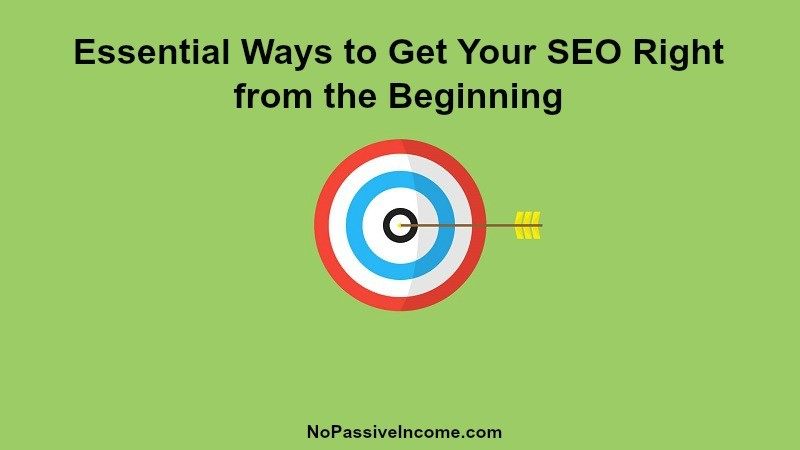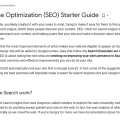SEO can sometimes feel overwhelming, especially for small business owners, bloggers, or digital marketers juggling multiple tasks. But here’s the secret—effective SEO doesn’t have to mean competing with big-budget competitors on broad, high-competition keywords. Enter Micro-SEO strategies—a targeted approach to optimization tailored to carve out success in smaller, more specific niches.
This blog will walk you through what Micro-SEO is, why it’s worth pursuing, and actionable strategies you can implement today. By the end, you’ll have a roadmap to boost your visibility, attract more traffic, and achieve real results without needing a massive marketing budget.
Table of Contents
What Is Micro-SEO?
Micro-SEO is the art of targeting small, ultra-specific sections of your audience or niche. Unlike traditional SEO tasks that focuses on ranking for broad, competitive search terms, Micro-SEO hones in on long-tail keywords, hyper-local optimization, and specific audience needs. It’s about reaching the right people with precision rather than casting a broad net.
Think of it this way—competing for the keyword “coffee shops” may be out of reach for a local café, but optimizing for “best oat latte in Brooklyn” makes it easier to rise above the noise.
Why Micro-SEO Matters
- Low Competition: Long-tail and niche keywords typically have less competition, making it easier for smaller businesses to rank.
- Higher Conversion Rates: Targeted searches often indicate stronger intent. Someone searching for “affordable wedding photographers in Portland” is likely ready to make a booking.
- Budget-Friendly: You don’t need to spend heavily on ads or resources to compete in a crowded market—perfect for those with smaller budgets.
Now, let’s explore how you can build your Micro-SEO strategy step by step.
Key Micro-SEO Strategies
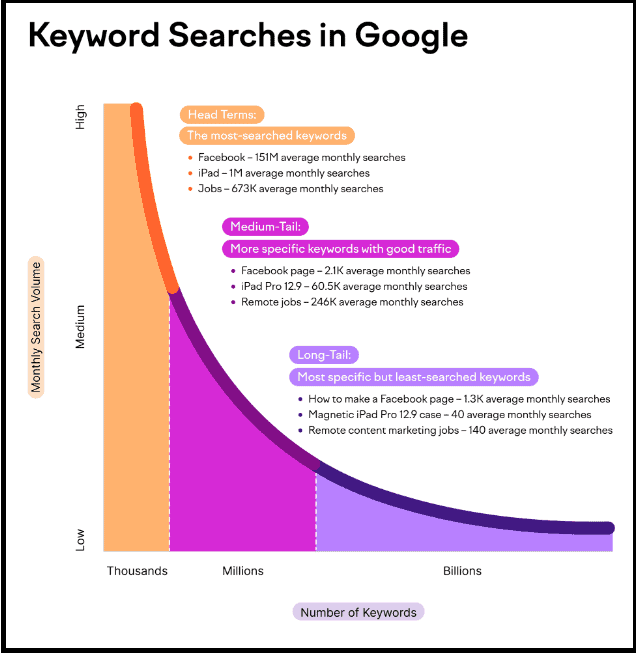
1. Focus on Long-Tail Keywords
Broad keywords like “running shoes” are dominated by industry giants. Instead, zero in on specific, intent-driven keywords like “best running shoes with arch support for women.”
How To Find Long-Tail Keywords
- Use tools like Google’s Keyword Planner, Ubersuggest, or AnswerThePublic.
- Monitor competitors by analyzing their pages with tools like SEMRush.
- Look at your audience’s queries in Google Analytics or from site search data.
The goal? Capture users who are closer to making a purchase or looking for niche solutions.
2. Optimize for Featured Snippets
If you’ve searched something in Google lately, you’ve probably seen the “answer box” or featured snippet at the top of the search results. Ranking here can send a ton of organic traffic your way.
Steps to Optimize for Snippets
- Use question-based headers (e.g., H2 or H3 like “What is Micro SEO?”) and give simple, direct answers.
- Write content in lists, tables, or quick how-to formats—Google loves these!
- Target terms like “best,” “how-to,” or “why” to appeal to snippet-friendly queries.
Bonus tip: You don’t need to rank at #1 to grab a snippet, so even newer websites have a chance.
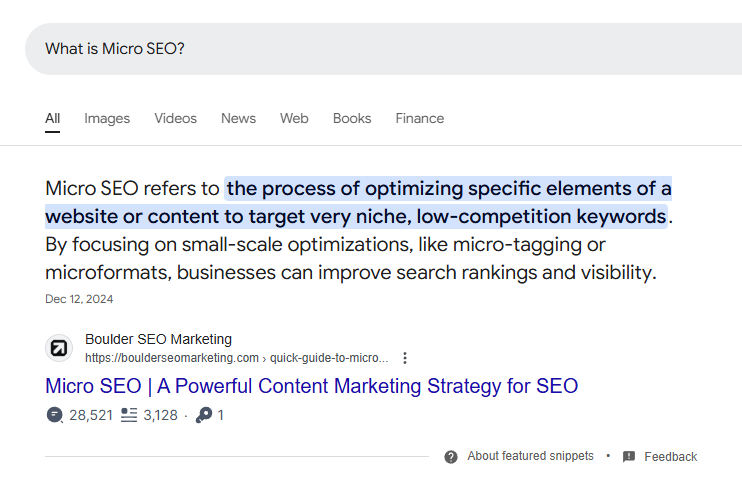
3. Hyper-Local SEO
For brick-and-mortar businesses, local searches like “shoe repair near me” are pure gold. Local SEO helps you dominate these queries.
Actionable Local SEO Tips
- Set up a Google Business Profile (formerly Google My Business) and optimize it with accurate details, photos, and customer reviews.
- Add location-specific keywords to your website (“affordable flower delivery in Seattle”).
- Use schema markup for local businesses to help Google understand and display your location information better.
4. Refresh and Optimize Existing Content
Don’t just focus on creating new content—your existing blog posts or articles can be a treasure trove of opportunity.
How To Boost Old Content
- Refresh outdated blogs and update stats, links, and trends to make them relevant again.
- Add internal links from newer pages to boost SEO authority.
- Incorporate trending long-tail keywords or subtopics based on current audience demand.
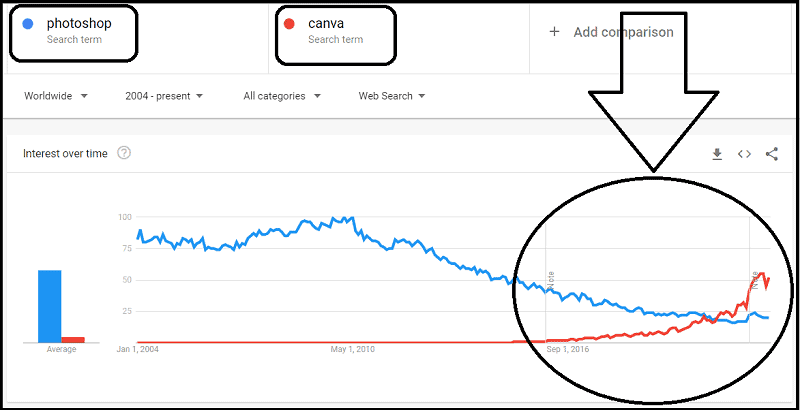
5. Leverage Micro-Influencers
While this doesn’t fall directly under technical SEO, collaboration with micro-influencers can generate organic backlinks and drive targeted traffic to your site.
Identify influencers (with 10,000-50,000 followers) who align with your niche. Have them share your content or feature your product in a post, which can help attract more visitors to your site.
6. Serve Niche Content Needs
The more specific your content is, the better chance it has of resonating deeply with your audience.
Examples of Niche Content
- Create “ultimate guides” that solve specific pain points (e.g., “How to market a yoga studio with zero budget”).
- Share hyper-targeted case studies, templates, or tools.
- Build glossaries or FAQs specific to your niche. For example, a baking blog might create a “Beginner’s Buttercream FAQ.”
This strategy works wonders for smaller audiences and creates opportunities for low-competition traffic.
FAQs About Micro-SEO
What are long-tail keywords, and why are they important for my business?
Long-tail keywords are highly specific search phrases, often with 4+ words, like “best organic dog food for golden retrievers.” They’re crucial for Micro-SEO because they have lower competition and attract intent-rich traffic (usually people ready to take action).
How often should I refresh my content for SEO?
At least once a year. However, if you spot trends or updates in your niche earlier, don’t wait! Updating more frequently keeps your content relevant and ranks higher.
Is Micro-SEO suitable for all types of businesses?
Yes, but it’s particularly impactful for small businesses, bloggers, and organizations trying to capitalize on niche markets. Major enterprises often focus on broader strategies, leaving smaller micro-opportunities wide open.
Do I need expensive tools to implement Micro-SEO?
Not necessarily. Free or affordable tools like Google Keyword Planner, MozBar, and Ubersuggest are great starting points for most small business owners or solo marketers.
Take the Next Step Towards SEO Success
Micro-SEO strategies allow you to compete effectively in the digital realm without needing a massive budget or team. By honing in on long-tail keywords, focusing on local SEO, and consistently optimizing your content, you can create lasting visibility and impact in your niche.
Start implementing these tactics today, and watch your traffic grow while staying ahead of the competition.










